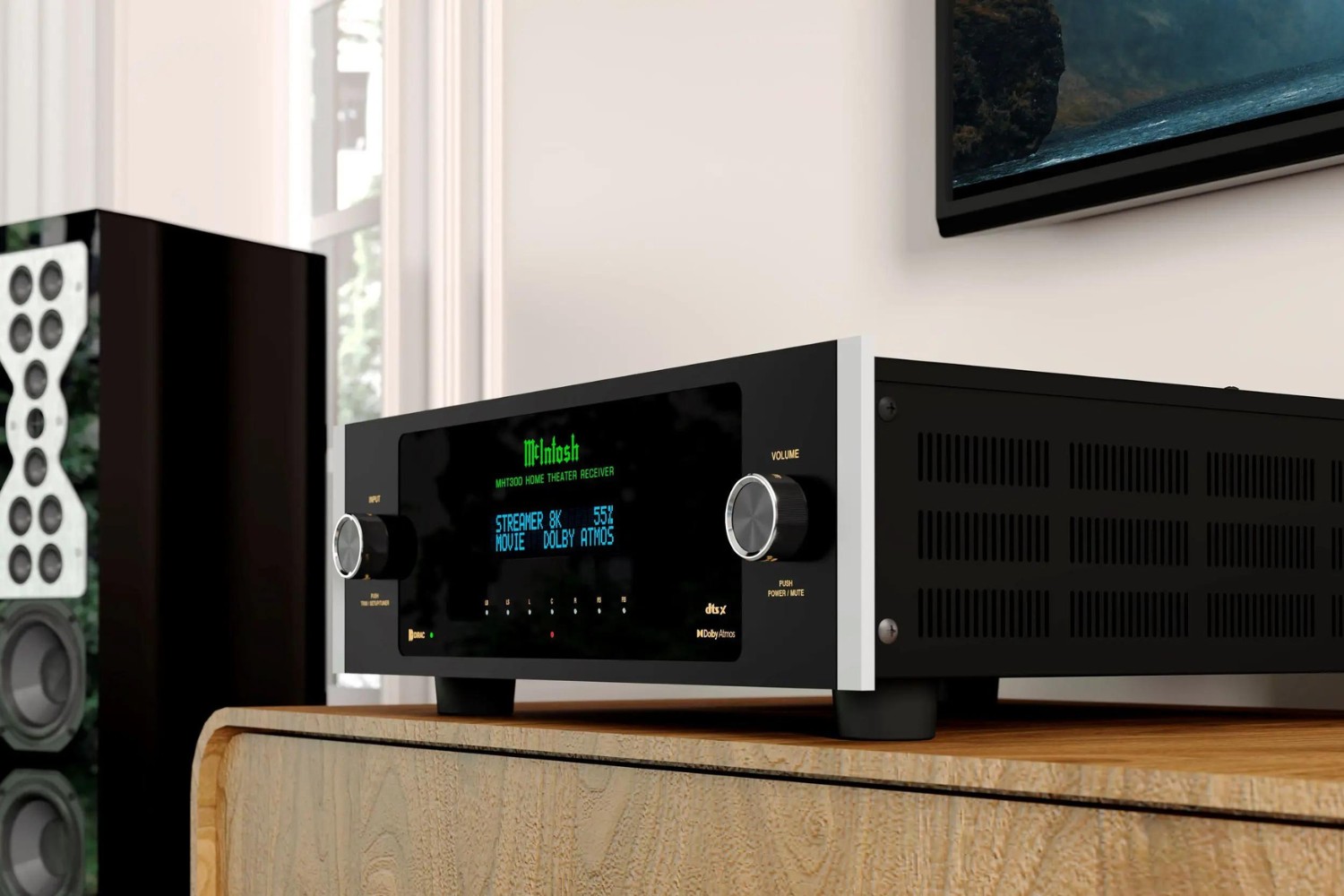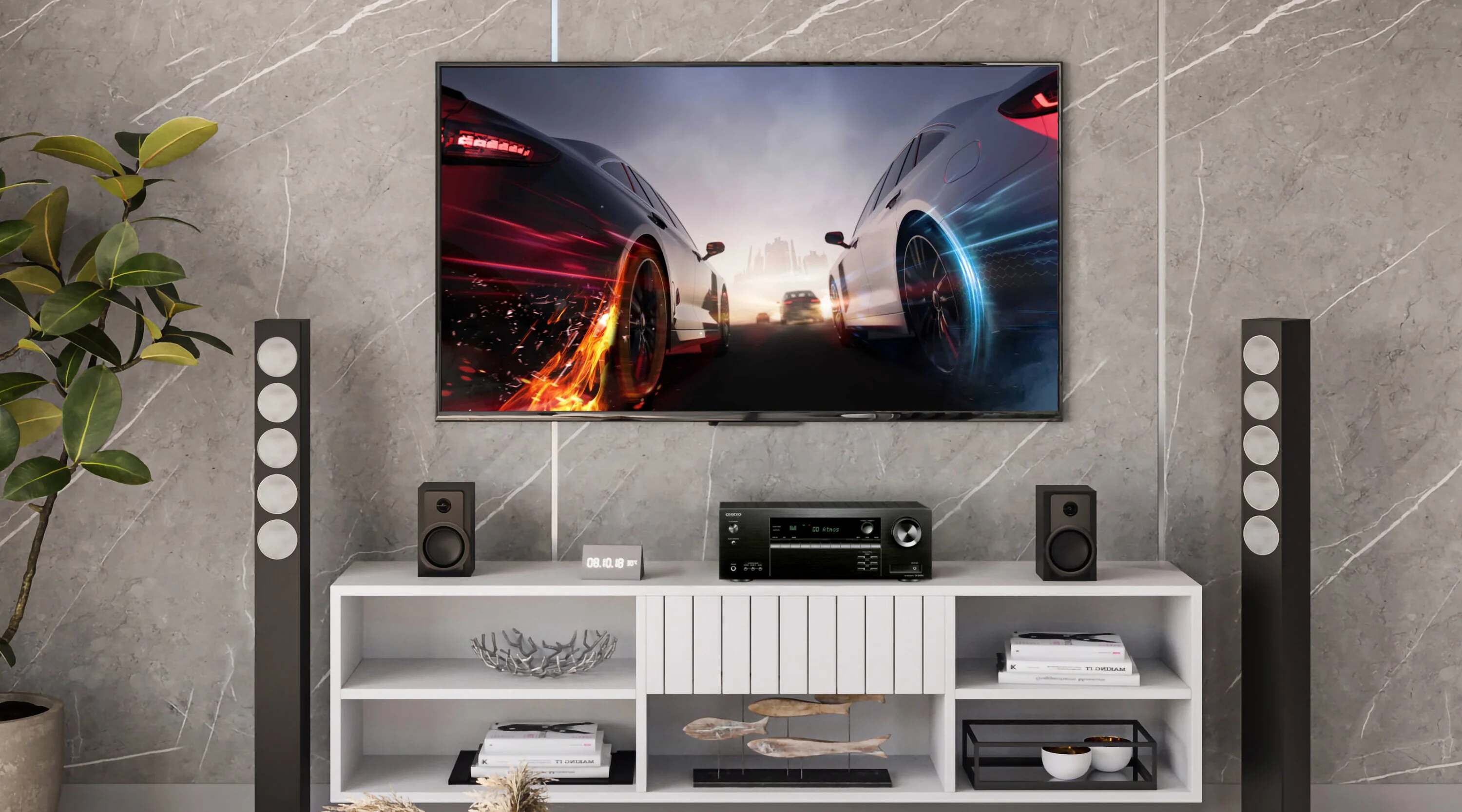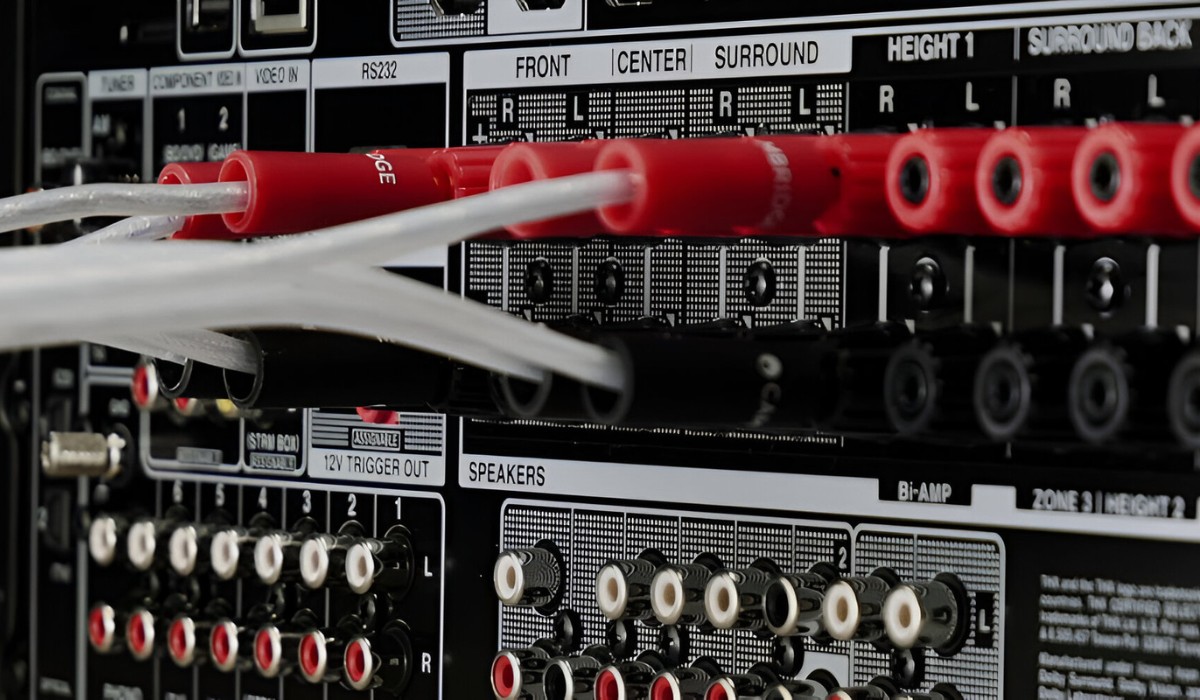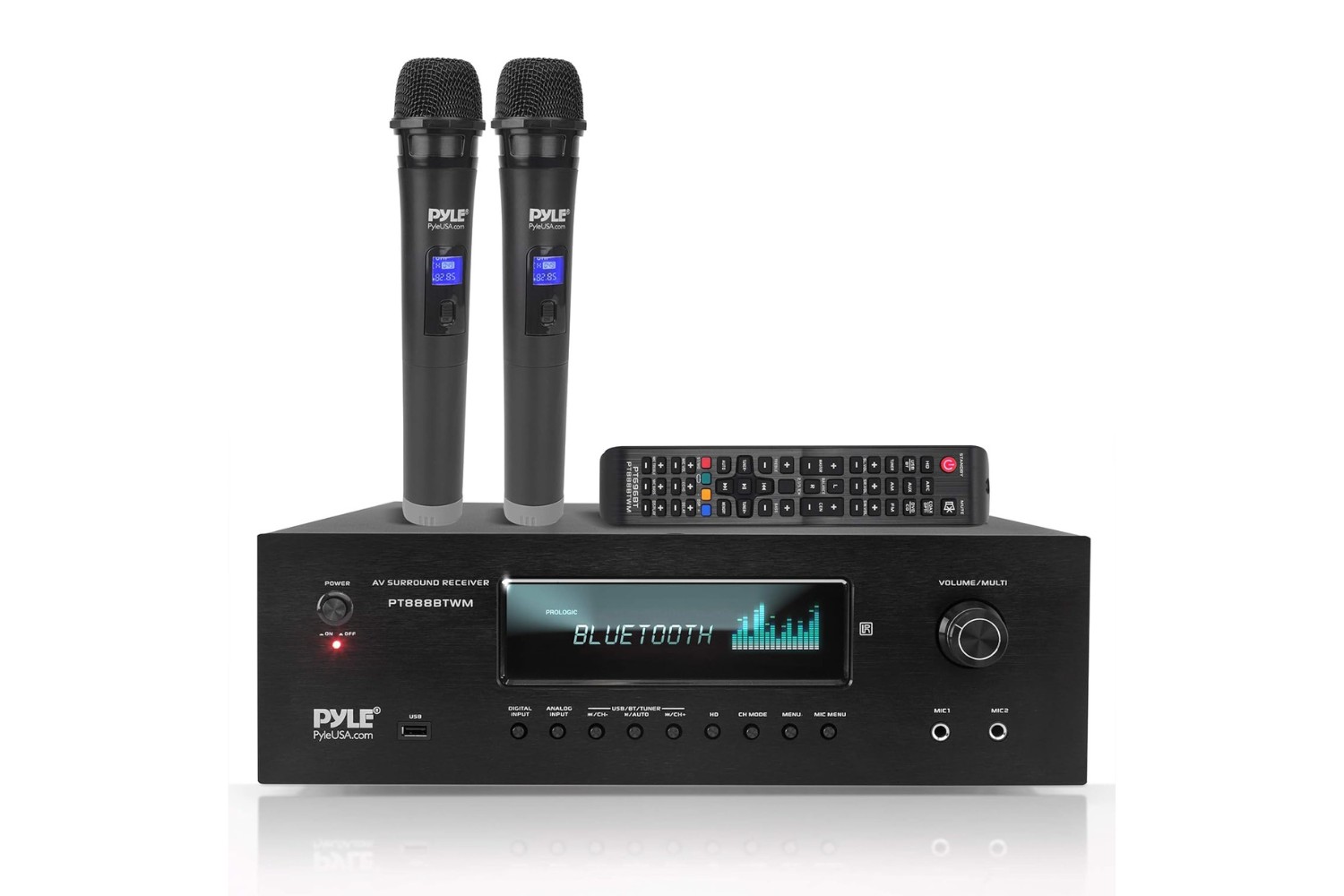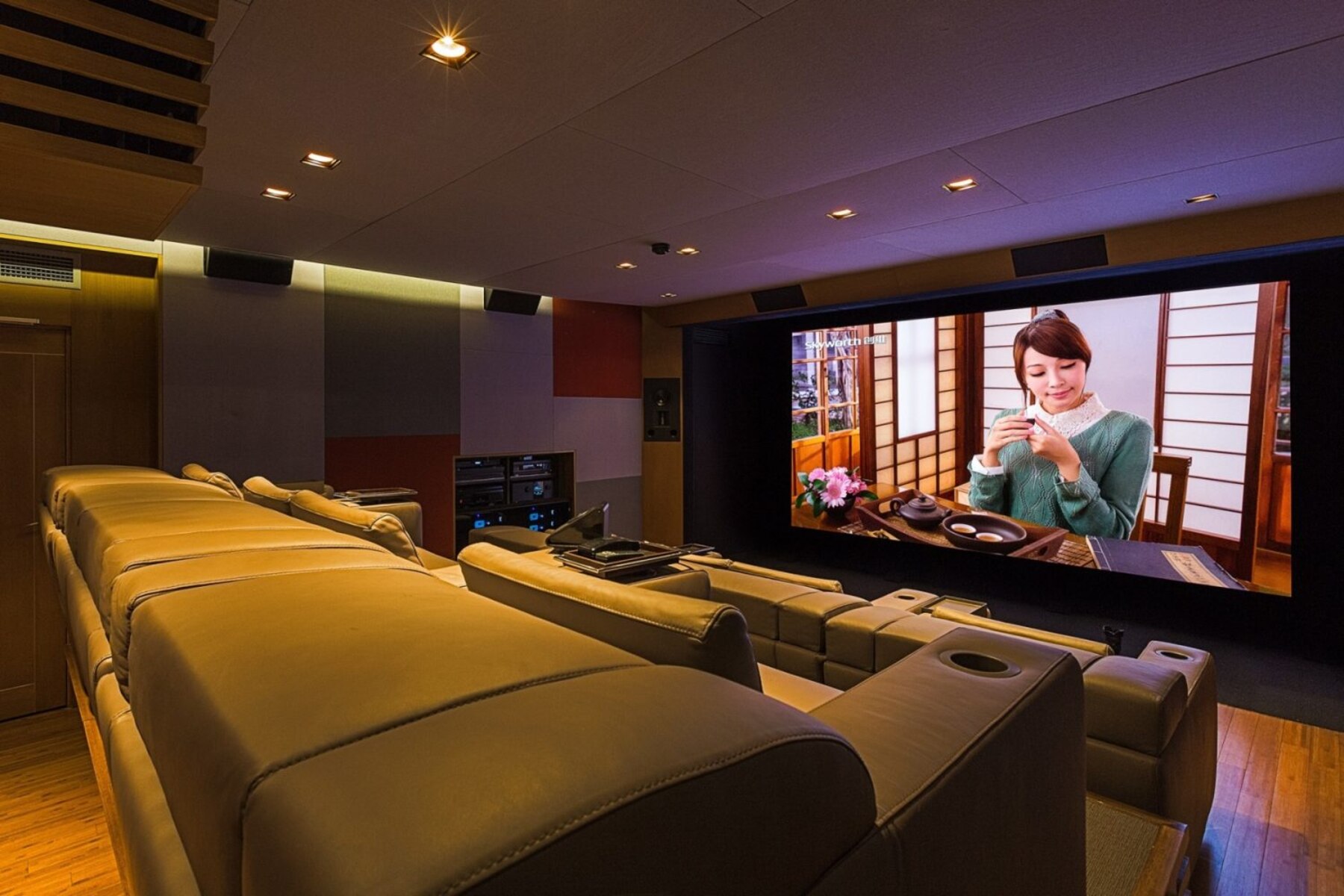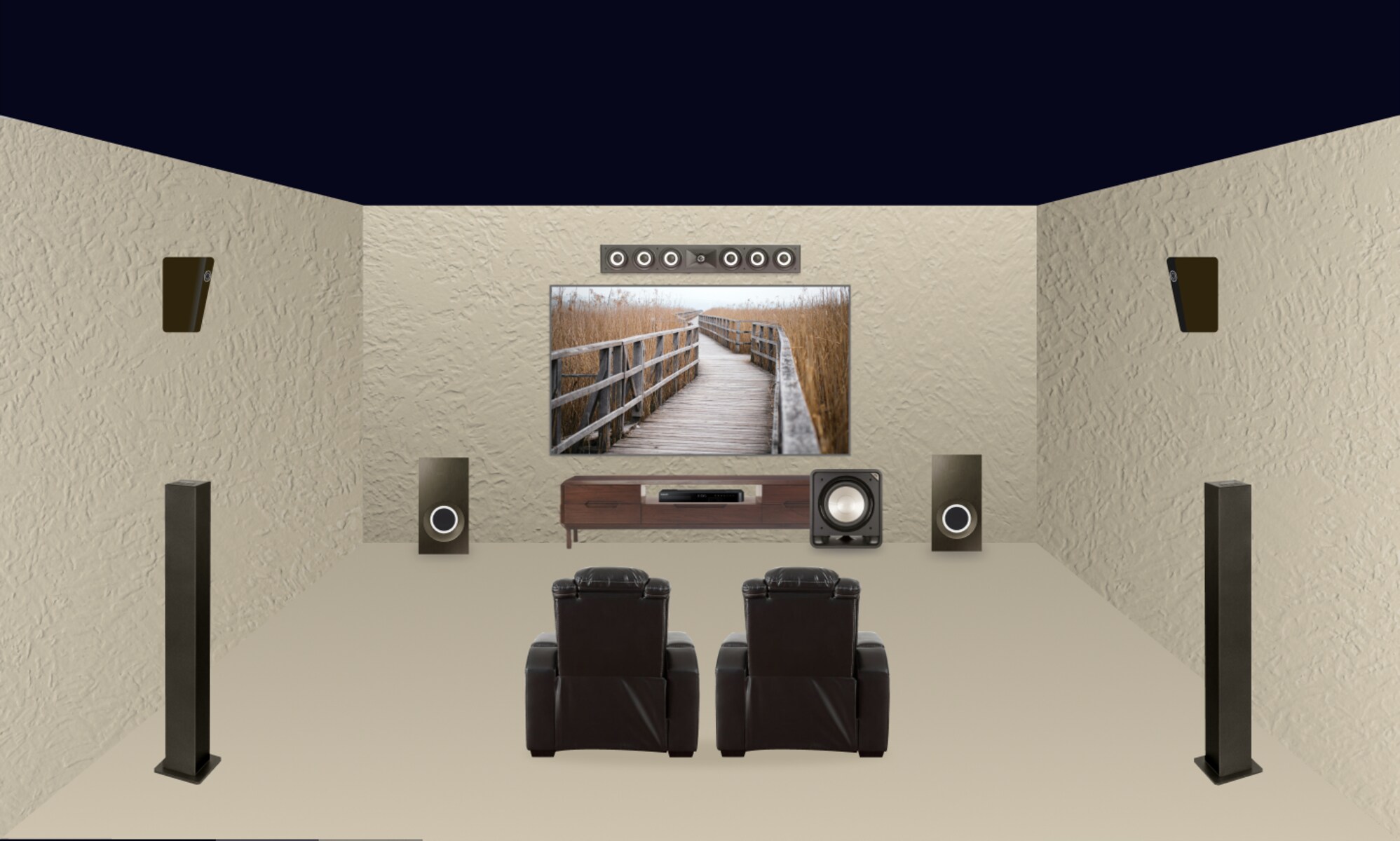Introduction
So, you've just invested in a top-of-the-line AV receiver and a set of powerful powered speakers, and now you're eager to experience the full potential of your audio setup. Connecting powered speakers to an AV receiver is a fundamental step in optimizing your home entertainment system for immersive sound. Whether you're a seasoned audiophile or a newcomer to the world of high-fidelity audio, understanding the intricacies of this process is essential for maximizing your listening experience.
In this guide, we'll delve into the intricacies of connecting powered speakers to an AV receiver, providing you with a comprehensive walkthrough that will demystify the setup process. By the end of this tutorial, you'll be equipped with the knowledge and confidence to seamlessly integrate your powered speakers with your AV receiver, unlocking the full sonic potential of your audio setup.
We'll start by gaining a clear understanding of the roles of the AV receiver and powered speakers in your audio system, setting the stage for a smooth and informed setup process. Then, we'll explore the step-by-step process of physically connecting your powered speakers to the AV receiver, ensuring that each connection is secure and optimized for pristine audio transmission. Following this, we'll guide you through the essential steps to configure your AV receiver for optimal performance with your powered speakers.
Finally, we'll touch on the crucial aspect of testing the connection to guarantee that everything is functioning as intended. By the end of this journey, you'll be ready to bask in the sonic splendor of your favorite music, movies, and games, all enhanced by the seamless integration of your powered speakers with your AV receiver.
So, without further ado, let's embark on this enlightening expedition into the realm of audio connectivity, where the marriage of technology and artistry converges to elevate your auditory senses. Let's dive into the heart of your audio system and unleash its full potential by connecting your powered speakers to your AV receiver.
Understanding the AV Receiver and Powered Speakers
Before embarking on the physical connection of powered speakers to an AV receiver, it’s essential to grasp the distinct roles and functionalities of these two crucial components of your audio system. The AV receiver serves as the central hub, orchestrating the flow of audio and video signals while amplifying and processing the incoming signals to deliver a rich and immersive audiovisual experience. On the other hand, powered speakers, also known as active speakers, integrate amplifiers within their enclosures, eliminating the need for an external amplifier or receiver.
AV receivers are equipped with a myriad of inputs and outputs, including HDMI, optical, coaxial, and analog audio connections, allowing them to accommodate various audio and video sources such as Blu-ray players, gaming consoles, set-top boxes, and streaming devices. Additionally, AV receivers feature built-in amplifiers to power passive speakers and process multichannel audio formats, making them the central command center for your home theater or audio setup.
Powered speakers, in contrast, are self-contained units with built-in amplifiers tailored to the specific drivers and enclosures, resulting in an optimized and cohesive audio reproduction. These speakers often feature a range of input options, including balanced XLR, unbalanced RCA, and digital inputs, offering flexibility in connectivity and compatibility with different audio sources.
Understanding the distinct characteristics and functionalities of both the AV receiver and powered speakers is crucial for seamless integration. By comprehending the capabilities and limitations of each component, you can make informed decisions when configuring and connecting them to ensure optimal performance and fidelity.
With a clear understanding of the unique attributes of the AV receiver and powered speakers, you’re now primed to delve into the intricacies of physically connecting and configuring these components to unlock the full potential of your audio system.
Connecting Powered Speakers to an AV Receiver
Now that you have a solid grasp of the roles and functionalities of the AV receiver and powered speakers, it’s time to delve into the physical process of connecting these components. The connection process involves establishing a secure and optimized link between the AV receiver’s audio outputs and the inputs of the powered speakers, ensuring a seamless flow of audio signals and optimal performance.
First and foremost, identify the audio output options available on your AV receiver. Common output types include RCA, balanced XLR, and optical or coaxial digital outputs. Once you’ve identified the appropriate output, select the corresponding input on your powered speakers. For instance, if your AV receiver features RCA audio outputs, connect them to the RCA inputs on your powered speakers using high-quality audio cables.
When making the physical connections, ensure that the cables are firmly seated in the respective outputs and inputs, minimizing the risk of signal interference or disconnection. It’s advisable to route the cables in a tidy and organized manner to prevent tangling and to maintain a neat setup.
For balanced XLR connections, use XLR cables to establish a balanced audio link between the AV receiver and the powered speakers. This type of connection is ideal for minimizing noise and interference, making it a preferred option for professional audio setups and environments where signal integrity is paramount.
If your AV receiver supports digital audio output, such as optical or coaxial, and your powered speakers feature corresponding digital inputs, utilize high-quality digital audio cables to transmit the audio signals digitally. Digital connections offer the advantage of transmitting audio in a noise-resistant format, ensuring pristine audio reproduction without the susceptibility to analog signal degradation.
Once the physical connections are in place, power on your AV receiver and powered speakers, ensuring that all components are operational. With the physical connections established, you’re now ready to proceed to the next crucial step: configuring your AV receiver to optimize its performance with the connected powered speakers.
Setting Up the AV Receiver for Powered Speakers
Configuring your AV receiver to harmonize with your powered speakers is a pivotal step in ensuring optimal audio performance and seamless integration. The configuration process involves adjusting settings and parameters within the AV receiver’s interface to accommodate the specific characteristics and requirements of your powered speakers.
Begin by accessing the setup menu or audio settings on your AV receiver. Navigate to the speaker configuration or audio output settings to specify the type of speakers connected. Select the appropriate speaker size and crossover settings to align with the capabilities of your powered speakers. This step ensures that the AV receiver directs the audio signals to the powered speakers in a manner that maximizes their performance and complements their frequency response.
Additionally, if your powered speakers feature adjustable EQ (equalization) settings or DSP (digital signal processing) options, consider configuring the AV receiver’s audio output to provide a neutral or flat response, allowing the powered speakers to exert greater control over the audio characteristics. This collaborative approach ensures that the powered speakers can faithfully reproduce the audio signals without undue coloration or alteration imposed by the AV receiver’s processing.
Depending on the capabilities of your AV receiver, you may have the option to assign specific audio presets or profiles tailored to the characteristics of your powered speakers. These presets can optimize the AV receiver’s signal processing and amplification to align with the powered speakers’ attributes, delivering a tailored and refined audio experience.
Furthermore, if your powered speakers support bi-amping or tri-amping configurations, the AV receiver may offer dedicated outputs or settings to facilitate these advanced connection methods. By leveraging these options, you can unleash the full potential of your powered speakers, allowing them to operate at their peak performance with the support of the AV receiver’s amplification and signal routing capabilities.
Once you’ve configured the AV receiver to complement your powered speakers, it’s essential to perform a thorough check of the settings and ensure that the adjustments align with the specifications and recommendations provided by the manufacturers of both the AV receiver and powered speakers. With the AV receiver finely tuned to synergize with your powered speakers, you’re poised to embark on an immersive audio journey that showcases the harmonious marriage of technology and artistry.
Testing the Connection
With the physical connections established and the AV receiver configured to complement your powered speakers, it’s imperative to conduct a comprehensive evaluation of the connection to validate its integrity and performance. Testing the connection involves verifying the audio output, assessing the sonic fidelity, and ensuring that all components are operating harmoniously.
Commence the testing process by selecting an audio source that showcases a diverse range of frequencies, dynamics, and spatial characteristics. This could be a favorite music track, a scene from a cinematic masterpiece, or a segment from a video game known for its immersive sound design. By choosing an engaging and varied audio source, you can assess the full spectrum of your audio system’s capabilities.
Play the selected audio content through your AV receiver, directing the audio signals to the connected powered speakers. As the audio permeates the room, pay close attention to the clarity, tonal balance, and spatial imaging rendered by the powered speakers. Evaluate the low-frequency reproduction, midrange articulation, and high-frequency detail to discern the overall cohesiveness and accuracy of the audio reproduction.
During the testing phase, it’s essential to verify that the AV receiver is directing the audio signals to the powered speakers in the intended configuration. If your powered speakers offer stereo, surround, or multichannel capabilities, confirm that the AV receiver is distributing the audio signals accordingly, harnessing the full potential of the powered speakers’ capabilities.
As the audio resonates through the room, assess the soundstage, imaging, and envelopment created by the powered speakers in collaboration with the AV receiver. Pay attention to the spatial precision, dynamic impact, and tonal authenticity exhibited by the audio reproduction, ensuring that the connection between the AV receiver and powered speakers is translating the intended sonic experience with fidelity and finesse.
Throughout the testing process, remain attentive to any anomalies, distortions, or irregularities that may arise, addressing them promptly to refine the connection and optimize the audio performance. By meticulously testing the connection and scrutinizing the audio output, you can fine-tune the settings, cables, and configurations to achieve an impeccable synergy between your AV receiver and powered speakers.
Upon affirming the robustness and fidelity of the connection, you can revel in the assurance that your powered speakers are seamlessly integrated with your AV receiver, ready to deliver a captivating and immersive audio experience across a myriad of entertainment mediums.
Conclusion
Congratulations! You have successfully navigated the intricate process of connecting powered speakers to an AV receiver, culminating in a harmonious fusion of cutting-edge audio technology and immersive sound reproduction. By gaining a profound understanding of the roles and functionalities of the AV receiver and powered speakers, you’ve laid a solid foundation for a seamless integration that optimizes the sonic potential of your audio system.
Throughout this journey, you’ve ventured into the realm of physical connections, meticulously establishing secure and optimized links between the AV receiver and powered speakers. By selecting the appropriate cables and inputs, you’ve ensured a pristine audio transmission that sets the stage for a captivating auditory experience.
Delving deeper, you’ve embarked on the pivotal phase of configuring the AV receiver to complement your powered speakers, fine-tuning settings and parameters to harmonize the audio output with the unique characteristics of your speakers. This collaborative synergy between the AV receiver and powered speakers paves the way for a refined and tailored audio experience that transcends conventional boundaries.
As you ventured into the testing phase, you meticulously scrutinized the audio output, assessing the sonic fidelity, spatial imaging, and dynamic impact rendered by the connected powered speakers. Through this diligent evaluation, you’ve affirmed the integrity and robustness of the connection, ensuring that your audio system stands poised to deliver a captivating and immersive sonic journey across a diverse array of entertainment content.
By embracing this enlightening expedition into the realm of audio connectivity, you’ve not only connected powered speakers to an AV receiver but have also forged a profound relationship between technology and artistry. The seamless integration of these components has unlocked the full potential of your audio system, allowing you to embark on a sensory odyssey where every note, every chord, and every sonic nuance is faithfully reproduced with finesse and authenticity.
Armed with this newfound knowledge and expertise, you’re now equipped to revel in the sonic splendor of your favorite music, movies, and games, all enriched by the seamless fusion of your powered speakers with your AV receiver. As you immerse yourself in the captivating realm of high-fidelity audio, may the harmonious marriage of technology and artistry continue to elevate your auditory senses and imbue your entertainment experiences with unparalleled sonic grandeur.







